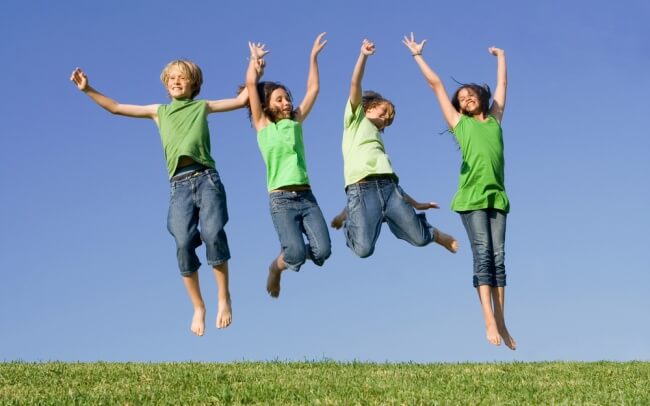
As the states slowly open up from the COVID-19 lockdown, there are many questions about how businesses, particularly summer camps, can open safely.
There is no doubt about the potential risk of an outbreak anytime people gather together. On the other hand, the country cannot remain in limbo. The CDC helpfully released guidance to help owners and operators of daycares, preschools, and camps reopen for the season.
Who Determines When to Open?
The state and local governments establish the parameters that must be met before various businesses can be open, even if it is a percentage of the typical group size. In many locations, a phase one opening has taken place. Retailers and other businesses that do not cater to large crowds that remain together for more than 10 minutes were allowed to open at 25% capacity.
Later phases allow theaters, classrooms, and churches to open at 50% with appropriate social distancing and other safety guidelines.
For summer camps in 2020, the state determines whether or when you can open, at what capacity, and with what risk mitigation requirements. The local Board of Health should provide rules and guidance on how you are permitted to operate.
The Role of the CDC
The Center for Disease Control and Prevention is the federal public health agency that develops and applies disease prevention and control as well as health education activities.
During the pandemic, the CDC has been front and center, not only in attempting to stem the tide but also to develop recommendations and guidelines for reopening the economy. For camps, the CDC provides a decision-making tool to help you decide whether you are ready to open.
The CDC also released a list of general recommendations for businesses that cater to groups of children:
- Follow handwashing guidelines and wash hands frequently throughout the day.
- Train your staff on managing personal protective equipment, handling groups, and resist touching their faces.
- Cloth masks are worn by staff as non-surgical grade disposable masks are not made for all-day wear.
- Regularly disinfect surfaces.
- Distance all individuals at six feet whenever possible, and position sleepers head to foot.
- Spend as much time as possible outside and keep windows open.
- Restrict mixing groups of people and keep the groups as small as possible.
- Restrict visitors and stagger drop-off and pick-up times to reduce the number of parents in an area.
- Eliminate the use of common areas such as cafeterias and playgrounds. If you must use them, develop a staggered schedule to reduce crowds and exposure.
- Keep the attendance local, if possible. Try to reduce the chance someone will bring in the virus from elsewhere.
All of these steps should sound familiar by now, but you must consciously put these steps into practice to make everything work.
What to Do While You Wait for Guidance
In areas where the recommendations or order to open has not crystallized, you can do some planning while you wait.
- Consider making plans for programs of varying length, so you will be ready if the word comes down that you must shorten your camp program.
- Investigate virtual (online) camp models. Is it possible to offer virtual camping, especially if you are a STEM camp that typically meets in a classroom setting instead of outside?
- Assess your staff’s capabilities for handling an online camping experience.
- Consider whether your current financial situation allows you to open and make contingency plans for potential changes in state orders.
It is difficult to make changes to a program you have administered successfully in the past. But it’s a new world right now, and everyone is trying their best to adapt and remain solvent. Make the best decision now for operating your summer camp.
Tips for Preparing and Opening Summer Camp in the Time of Coronavirus
If you are reopening your summer camp this year, there are several things you can do ahead of time to prepare your staff and your camp area.
#1 Changes and Edits to Policies
Add changes required to respond to COVID-19 in your policies and practices. Parents and staff need to know about what may happen if there is a sudden closure, such as whether a refund will be issued. Also, you need to determine how to handle staff and children who become ill while at camp. Your current policy may not go far enough to keep the rest of the camp safe.
#2 Determine Staff Training Needs
Most staffers at camp are used to hugs, high-fives, and handshakes. Should that be allowed? Or should you tell staffers and campers that it’s better to wave or maybe touch an elbow?
Provide staff with best practices in keeping individuals separated, wearing masks, and practicing the appropriate hygiene.
#3 Plan Changes in Daily Operations
Health screenings at drop-off are essential for reducing illness in any camp. Taking temperatures and evaluating symptoms takes on new urgency this summer.
Further reduce crowding by limiting the number of people, such as parents and visitors, entering and exiting your facilities. Decide whether you will require masks for everyone. And emphasize cleaning and disinfecting procedures.
#4 Budgeting
You will need to budget more money for cleaning supplies, personal protective equipment, and thermometers. You may even find yourself hiring an extra person or two to help keep up with everything.
#5 Review Files
Review staff files to ensure they are complete, including staff health assessments, clearances, and training. Make sure you have everything in each child's record as well.
#6 Do a Deep Cleaning
Perform deep cleaning before you open and between camp sessions. Consider hiring a service to disinfect the area.
Also, don't use soft toys, dress-up clothes, sensory bins, or other shared items. When doing crafts, have enough supplies and equipment that each child has his or her own kit. Do not allow the sharing of scissors, markers, glue, or other supplies.
When handing out paper or other supplies, hand directly to each child. Do not ask them to “take one and pass it back.” Store the excess elsewhere until needed.
Once the activity is complete, thoroughly disinfect equipment and surfaces. Have the children wash their hands.
#7 Eliminate Field Trips
If your camp program is set on the premise of taking a group of children to a different place every day, you may want to rethink it. The first hurdle is transportation. It’s difficult, if not impossible, to social distance on a bus. The next hurdle is ensuring the destination is performing the required level of disinfecting and providing enough space for social distancing.
#8 Communicate
You cannot communicate enough with parents and staff. Email parents with any changes and keep them up to date on what you are doing to ensure a safe camp. Provide:
- New drop off and pick up procedures
- Hours of operation
- Social distancing guidelines
- What the child may and may not bring to camp
- Reminders for when to keep a child at home
Make sure all your policies are updated and provide everyone with a copy of the new handbook.
It’s a tough time to operate a summer camp. However, times have been tough for a few months now. With enough care and imagination, children can still have an enjoyable camp experience, while parents and staff feel safe.




